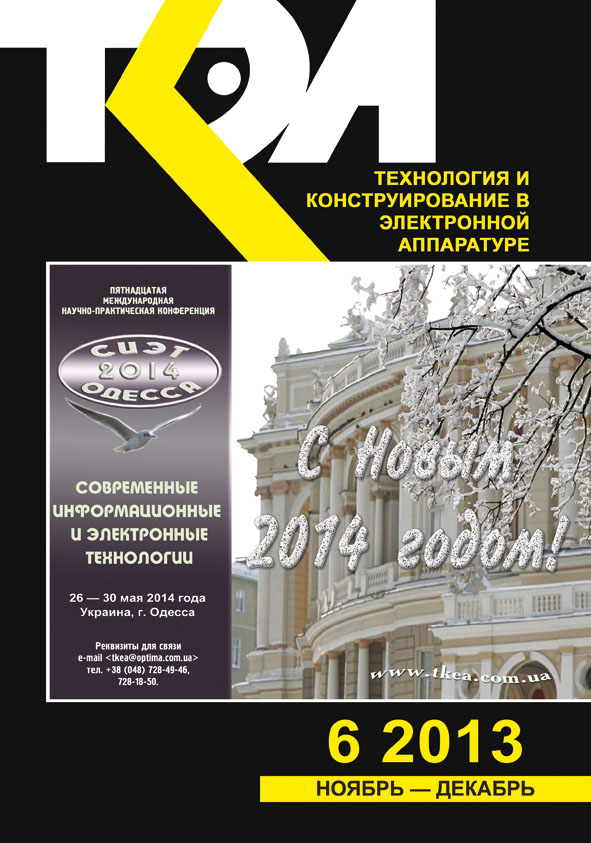Obtaining of bilateral high voltage epitaxial p–i–n Si structures by LPE method
Abstract
Silicon p–i–n-structures are usually obtained using conventional diffusion method or liquid phase epitaxy (LPE). In both cases, the formation of p- and n-layers occurs in two stages. This technological approach is quite complex. Moreover, when forming bilateral high-voltage epitaxial layers, their parameters significantly deteriorate as a result of prolonged heat treatment of active high-resistivity layer. Besides, when using diffusion method, it is impossible to provide good reproducibility of the process. In this paper, a technique of growing bilateral high-voltage silicon p–i–n-structures by LPE in a single process is proposed. The authors have obtained the optimum compounds of silicon-undersaturated molten solutions for highly doped (5.1018 cm–3) contact layers: 0.4–0.8 at. % aluminium in gallium melt for growing p-Si-layers and 0.03–0.15 at. % ytterbium in tin melt for n-Si-layers. Parameters of such structures provide for manufacturing of high-voltage diodes on their basis. Such diodes can be used in navigational equipment, communication systems for household and special purposes, on-board power supply systems, radar systems, medical equipment, etc.
References
Kharlamov R.V. Razrabotka tekhnologii proizvodstva kremnievykh epitaksial'nykh struktur dlya silovykh priborov. Diss. kand. tekhn. nauk [Development of production technology of silicon epitaxial structures for power devices. Ph.D. tech. diss.] Moskow, 2000. 166 p. (Rus)
Skorobogatov L.A., Zubritskiy S.M., Petrov A.L., Semenov A.L. Tekhnologii materialov dlya mikro- i nanoelektroniki [Materials technology for micro- and nanoelectronics]. Irkutsk State University, 2009. 83 p. (Rus)
Ufimtsev V.B., Achkurin R.Kh. Fiziko-khimicheskie osnovy zhidkofaznoi epitaksii [Physico-chemical principles of liquid-phase epitaxy]. Moskow, Metallurgiya, 1983. (Rus)
Gorelenok A. T., Kamanin A. V., Shmidt N. M. Rareearth elements in the technology of III–V compounds and devices based on these compounds. Semiconductors, 2003, vol. 37, iss. 8, pp. 894-914. https://doi.org/10.1134/1.1601656
Vakiv M.M., Krukovsky S.I., Tymchyshyn V.R. [Lowtemperature liquid-phase epitaxy of p-Si layers in composition of p-i-n Si high-voltage structures] Visnik Natsional'nogo universitetu “L'vivs'ka Politekhnika”, Ser. “Elektronika“, 2011, no. 708, pp. 50-54. (Ukr)
Korolev M.A., Krasyukov A.Yu., Polomoshnov S.A. Sovremennye problemy tekhnologii nanoelektroniki [Modern problems of nanoelectronics technology] Moskow, MIET, 2011. 100 p. (Rus)
Vakiv M.M., Krukovsky S.I., Tymchyshyn V.R. Grafitova kaseta dlya otrimannya dvostoronnikh epitaksiinikh struktur [Graphite cassette for obtaining bilateral epitaxial structures]. Pat. of Ukr no. 73670, 2012. (Ukr)
Copyright (c) 2013 Vakiv N. M., Krukovsky S. I., Tymchyshyn V. R., Vas’kiv A. P.

This work is licensed under a Creative Commons Attribution 4.0 International License.

